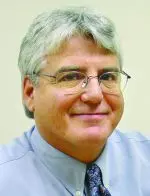
Your typical symphony orchestra has highly skilled musicians playing unique instruments, led by a conductor who meshes the talent, horns, winds and percussion into beautiful music. And, because of the skills of the musicians, the group can go from playing a Tchaikovsky overture to a “Looney Tunes” theme without — literally — missing a beat. The conductor might innovate — requesting a faster tempo than written, for example, or having a horn play a solo that would typically go to a woodwind — and the players get the satisfaction and reward for their ability to adapt to each new conductor that comes along.
So too should IT organizations ensure their staff have the skills and adaptability to change, since change is a constant in the technology space, and that they have the necessary platforms upon which their work will be built and delivered. This will ultimately give the organization the resiliency it needs to remain competitive in the current business landscape.
This was the theme of the opening keynote today at the virtual Gartner IT Infrastructure, Operations and Cloud Strategies Conference. Douglas Toombs, VP Analyst at Gartner, opened the keynote by saying that I&O “has shown the world that when we work together, we can meet any challenge.” But then the COVID-19 pandemic has forced us apart, and we’ve had to adapt to that, while changing the emphasis of efforts from efficiency to resiliency. This, he said, involves reimagining how people, operations and platforms are managed.
RELATED CONTENT: Gartner predicts top I&O trends for 2022
According to Gartner VP Analyst Dennis Smith, who followed Toombs, organizations must work hard to retain talent, seek out new talent, and nurture talent to grow and evolve. “We have to encourage a collaborative mindset,” he explained, noting that rock bands are more valuable to organizations than rock stars. “Skilled soloists must be combined with versatilists and other skill profiles to form cohesive teams,” he said, “and our best talent is always eager to learn new things and to experiment. So as IT leaders, we need to encourage and vigorously support that.”
Talent availability is the most significant barrier to technology adoption, Smith said, adding that organizations in today’s tight job market must “forward fill” skills, to get ahead of demand instead of lagging behind. Smith paraphrased hockey icon Wayne Gretzky, who once explained he excelled at the game by moving to where the puck is going, and not to where it is right now.
As for operations, Smith tied that to the Gartner research finding that 70% of existing I&O personnel will be working in DevOps by 2025, and that teams that have adjacencies in skills must be formed. For example, Smith said, “maybe a database administrator, who has years of expertise and data persistence, can play a role when starting to research the use of blockchain ledger systems, or they might start to move into a role supporting Master Data Management, where IT and business work together to ensure uniformity and consistency of an enterprise’s data assets no matter where they may reside. As IT leaders, we need to work with our staff to find these adjacency opportunities and set up a plan to direct your time to pursue these adjacencies.”
Also, he said, organizations must move to agile learning. He said organizations must emphasize business outcomes over knowledge gain, focus on real-time embedding over offline training time, foster a growth mindset over current skill sets, and encourage community compounding over individual practicing.
Lastly, Smith pointed out that it will be difficult to retain talent without a strategy for diversity, equity and inclusion. “The diverse array of challenges you will face in the marketplace necessitates having a diverse workforce to meet those challenges,” he emphasized. “Your teams must be diverse in a number of areas in terms of race, age, gender, technical ability, background experiences, thinking patterns and communication styles.”
On the platform front, organizations must build an adaptive platform that leverages the wide array of infrastructure choices available and is tightly integrated with APIs everywhere to meet the needs of developers. Smith noted that data processing capabilities available to us and iron out have never been greater in the history of IT. So, he said, “we have to start letting go of some of our concerns about who owns what and where it lives, and start focusing more on what we can achieve with all of it.”
Building an adaptive platform relies on technologies such as APIs everywhere, hyperautomation and intelligence, and ultimately with others that are just now emerging, Smith said.
Julia Palmer, another Gartner VP analyst, then said organizations must replace inflexible work processes and evolve to adaptive operations. Returning to the orchestra analogy, she said, “Let’s face it, no matter how good your instrument, no matter how talented your musicians, you must perform successfully in order to actually deliver value. So how do we take our exceptional performance that we gave during COVID and convert it into something that we can embrace in scale? To do this, I&O must evolve to adaptive operations, where musicians and our instruments come together to perform in a world where constant change is the norm and not an exception.”
The key to all of this, Palmer said, is to pair I&O style of operations with the three modes that the business operates around — running the business, growing the business, and transforming our business.
“To help our business to grow adaptively we must sense and respond to the business change,” Palmer said. “The quicker we can sense changes, the quicker we can respond to them, and the better we can address predictability in the world around us.”








